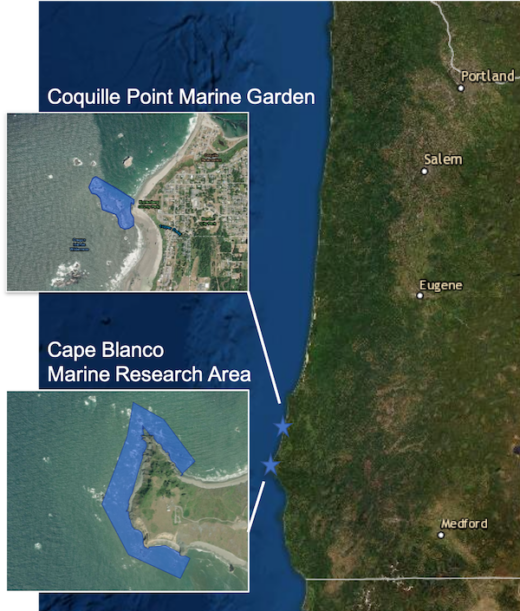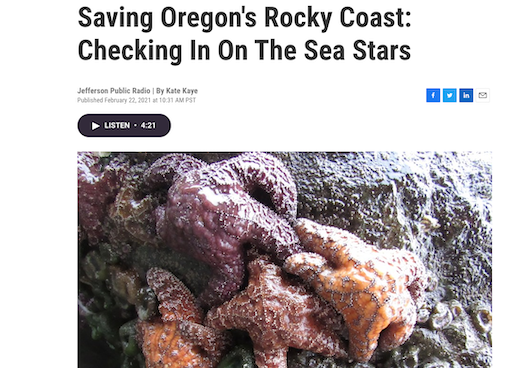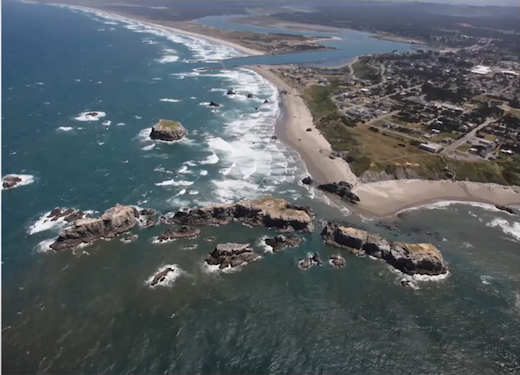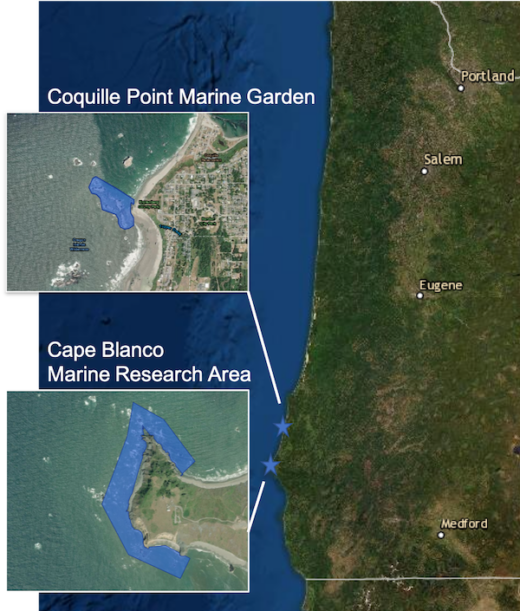
Oregon's Ocean Policy Advisory Council (OPAC) approved and recommended unanimously this summer two new marine protected area designations on Oregon's southern coast - Coquille Point Marine Garden just adjacent the town of Bandon and Cape Blanco Marine Research Area, just north of the town of Port Orford. The designations and recommendations follow a lengthy process to update the state's Territorial Sea Plan Part III, the Rocky Habitat Strategy. The recommended designations were just 2 of 12 that were proposed by individuals and groups from the public through a newly developed public proposal process that was created as part of the overall Strategy update. The OPAC additionally approved updates to the overall Strategy, which includes key enforceable policies and strategies for coordinating the protection of rocky habitat - in particular new provisions for submerged aquatic vegetation (think kelp!), climate change, sea level rise and coordination with tribal nations for cultural resources. Additionally, six other proposed area designations will be further evaluated along the coast this fall and winter.
About Rocky Habitats and the TSP Process
Understood and experienced by most Oregonians as "tidepools", Oregon's shoreline is nearly 40% lined with rocky habitat. Rocky habitats both along the shore, but also further offshore (submerged rocky "reefs" and islands) are some of the most important and diverse habitats on the planet. From providing essential habitat for fish and invertebrates to haulouts and nesting for marine mammals and birds, to providing opportunities for access, education and research, the state recognizes the critical importance in properly coordinating and protecting these special habitats; thus, the Rocky Habitat Strategy is an integral part of the Territorial Sea Plan. Surfrider Foundation played a strong leadership role over the past 3 years in updating this plan, chairing the state's Rocky Habitat Strategy Working Group and helping to ultimately bring forth consensus votes for the overall strategy and the new protected areas. You can learn more about the overall process, read the updated strategy, review various designation proposals and learn about upcoming workshops on the State's Rocky Habitat Website.
 Listen! - Jefferson Public Radio did a nice series covering some of the stories of the Rocky Habitat process, click the photo above or
link here to tune in to the series.
Listen! - Jefferson Public Radio did a nice series covering some of the stories of the Rocky Habitat process, click the photo above or
link here to tune in to the series.
About the New Designations
So what's is Coquille Point Marine Garden, what's Cape Blanco Research Area, what are the rules, protections and goals of these areas? Here's the quick scoop on the two new areas at Coquille Point and Cape Blanco for when these areas become officially implemented. Currently these areas are still in the designation phase and while approved, official rules will still need to be adopted by the various state agencies before the below rules are implemented and actually apply (likely sometime in 2022).
Coquille Point Marine Garden
 Aerial view of Coquille Point and the area of the newly established Marine Garden. Adjacent the new marine garden are many offshore rocks and islands that are also part of the Oregon Islands National Wildlife Refuge.
Aerial view of Coquille Point and the area of the newly established Marine Garden. Adjacent the new marine garden are many offshore rocks and islands that are also part of the Oregon Islands National Wildlife Refuge.
Marine Gardens are designations intended to preserve the ecological integrity of an important rocky habitat area, while maintaining public access and providing for education with a strong representative intertidal habitat. The Coquille Point Marine Garden builds off of a 30 year partnership dedicated to protecting and interpreting this shoreline gem of offshore rocks and islands on the south coast. Overview at a glance:
Location: Adjacent the town of Bandon, Oregon
Proposer: Shoreline Education for Awareness (SEA). An educational organization that works in partnership with USFWS for past 30 years interpreting in the intertidal area.
Goal: Provide enhanced education, enjoyment, public access, and resource awareness.
Invertebrate Harvest Restrictions: No commercial or recreational take in intertidal areas. Allowances: Single mussel for bait or by scientific/education permits only.
Fish Harvest Restrictions: Same as coastwide, no additional restrictions.
Marine Aquatic Vegetation: No take in intertidal areas except by authorization for scientific or educational purposes.
Access the full Coquille Point Marine Garden materials here, including proposal, maps, evaluation materials and all supporting documents!
Cape Blanco Marine Research Area
 Aerial view looking north towards Cape Blanco. Fun Fact: The Cape is the furthest west point in Oregon and one of the furthest in North America!
Aerial view looking north towards Cape Blanco. Fun Fact: The Cape is the furthest west point in Oregon and one of the furthest in North America!
Marine Research Areas are designations intended to preserve research integrity of an important rocky habitat site. Cape Blanco is a significant ecological area of study on Oregon's southern coast, jutting out far into the Pacific, it's the convergence point between two major bioregions - Cape Mendocino and Cape Disappointment. The Cape Blanco Marine Research Area builds off of decades of intertidal research and monitoring in the area from Oregon State University's Partnership for Interdisciplinary Studies of Coastal Oceans (PISCO).
Location: Just north of the town of Port Orford, Oregon.
Proposer: Partnership for Interdisciplinary Studies of Coastal Oceans (PISCO).
Goal: Support research and monitoring while maintaining ecological integrity.
Invertebrate Harvest Restrictions: No commercial or recreational take in intertidal areas except by scientific or educational permit
Fish Harvest Restrictions: Coastwide regulations apply, no additional restrictions.
Marine Aquatic Vegetation Harvest: No take in intertidal areas except by authorization for scientific or educational purposes.
Access the full Cape Blanco Marine Research Area materials including proposal, maps, evaluation materials and all supporting documents!

